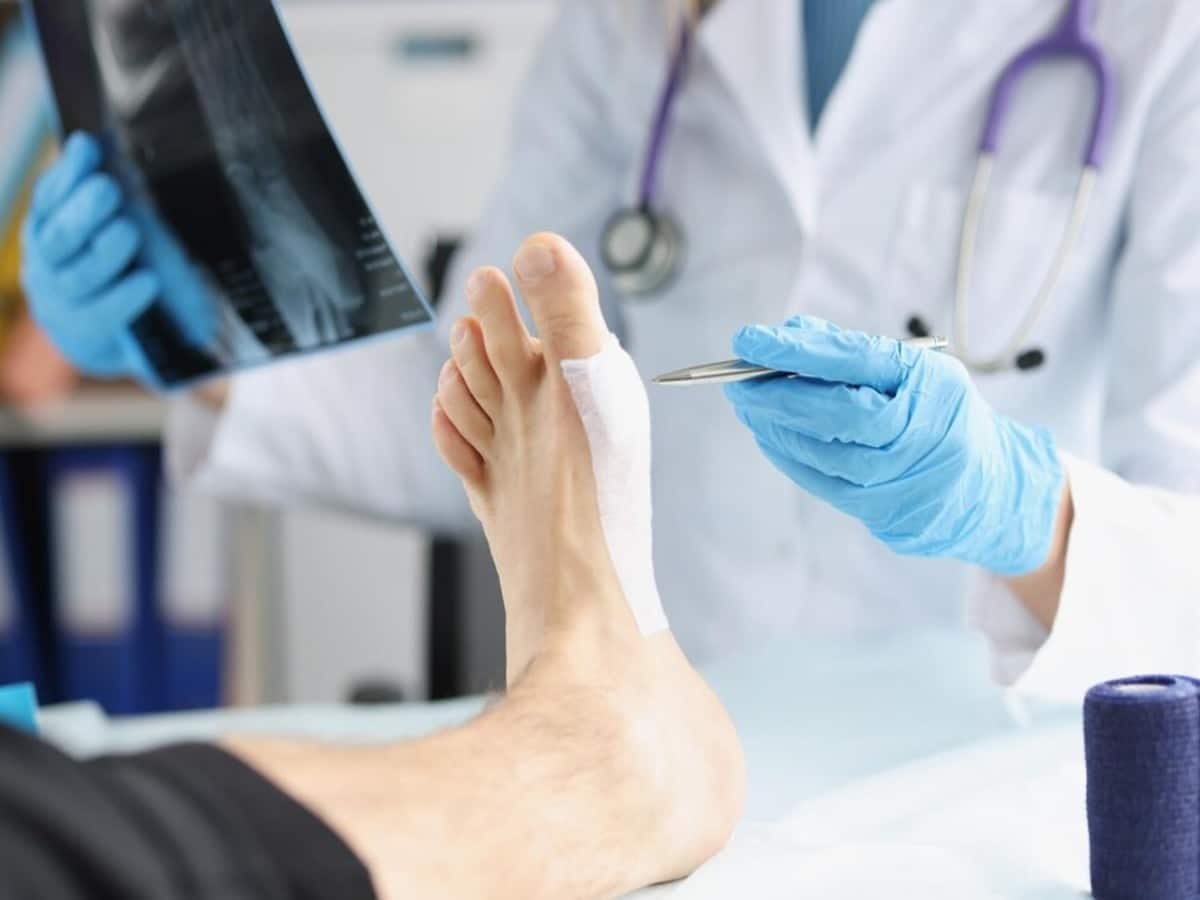Retired Army Man Needed Major Surgery For Ankle Pain; But Doctors Did This Instead…
The patient was finding it difficult to walk. The pain would aggravate with every step. Still, he pushed through. But, later, he was unable to walk at all and that is when he knew something was very wrong. Read on to find out more.
Had action not been taken at the right time, the entire joint would have been completely damaged and the patient would have required an ankle replacement surgery. (Photo: Freepik)
A 58-year-old retired army officer had been suffering from immense pain in the ankle for a long time. But, instead of undergoing a major surgery, he was treated at a hospital in Mumbai where doctors conducted a scientifically-advanced procedure on him that ensured fast recovery and minimal scarring. The patient underwent a two-hour-long ankle arthroscopy procedure to get relief from ankle pain and cartilage damage, thereby avoiding an ankle replacement surgery. Read on to find out more about the case.
According to a statement shared by Wockhardt Hospitals, Mira Road — where the patient was treated — the man, a resident of Mumbai, had been suffering from pain in his ankle that worsened when he walked. He had been enduring this for a year. Even after consulting with many doctors and undergoing conservative treatments along with medications and exercises, there was no relief. His pain deteriorated and he was unable to walk at all. That is when he found Dr Saikat Jena of Wockhardt Hospitals.
The consultant orthopaedic surgeon led a team that did the surgery on the patient. He said, as mentioned in the hospital statement, that when he first met the patient three months ago, he was in severe pain and unable to walk.
“After a detailed clinical examination, X-ray reports showed abnormalities in the ankle joint. MRI scan of the ankle joint was done next, which showed loss of cartilage over the talus bone that forms the ankle joint; it was causing the pain. These osteochondral defects can lead to joint damage and pain. The cartilage of the joint gets damaged spontaneously in a lot of patients without any specific reason. It is, however, believed that damages happen because of blood supply issues and steroid use, making it difficult to pinpoint one causative agent,” Dr Jena said.
The doctor added that normally, the cartilage is smooth. But under pressure, it can cause immense ankle pain. “In this patient, damage to the bone beneath the cartilage led to joint surface damage when arthritis occurred. That is why there is bone-to-bone grating due to friction. The lesion was largely affecting the entire medial half of the talus. Had action not been taken at the right time, the entire joint would have been completely damaged and the patient would have required an ankle replacement (a complex and fairly-uncommon surgery).”

According to the expert, ankle replacement is not a common procedure in the country. Knee and shoulder arthroscopy, however, are done on many patients. “Ankle arthroscopy is a minimally-invasive surgery to treat a damaged ankle and is not performed widely in India as compared to knee and shoulder arthroscopy,” he added.
Dr Jena further said ankle arthroscopy is used for conditions like ligament injuries, bone impingement, and cartilage damage. The frequency of the surgery has increased over recent years, owing to the fact that it is minimally-invasive, has a shorter recovery time, and because advancements have been made in arthroscopic technology, which is a keyhole surgery that allows the surgeon to view the inside of the ankle using a camera inserted through small cuts on the skin.
“After detecting the cartilage damage in the patient, the unstable part was identified. The lesion was opened and we took grafts from the patient’s own body — an osteochondral graft (a tissue that replaces damaged cartilage and underlying bone in a joint) — precisely from the knee. Then the cartilage was taken from the patient’s knee. Later, the damaged bone was removed with special instruments. The uneventful procedure lasted two hours. The patient was discharged on the second postoperative day.”
According to the doctor, the patient was advised a non-weight-bearing ambulation with walker support for a month. Exercises and rehabilitation were also done. Currently, the man is pain-free and walking without any support.
Don’t Miss Out on the Latest Updates.
Subscribe to Our Newsletter Today!
Subscribe Now

No Byline Policy
Editorial Guidelines
Corrections Policy
Source